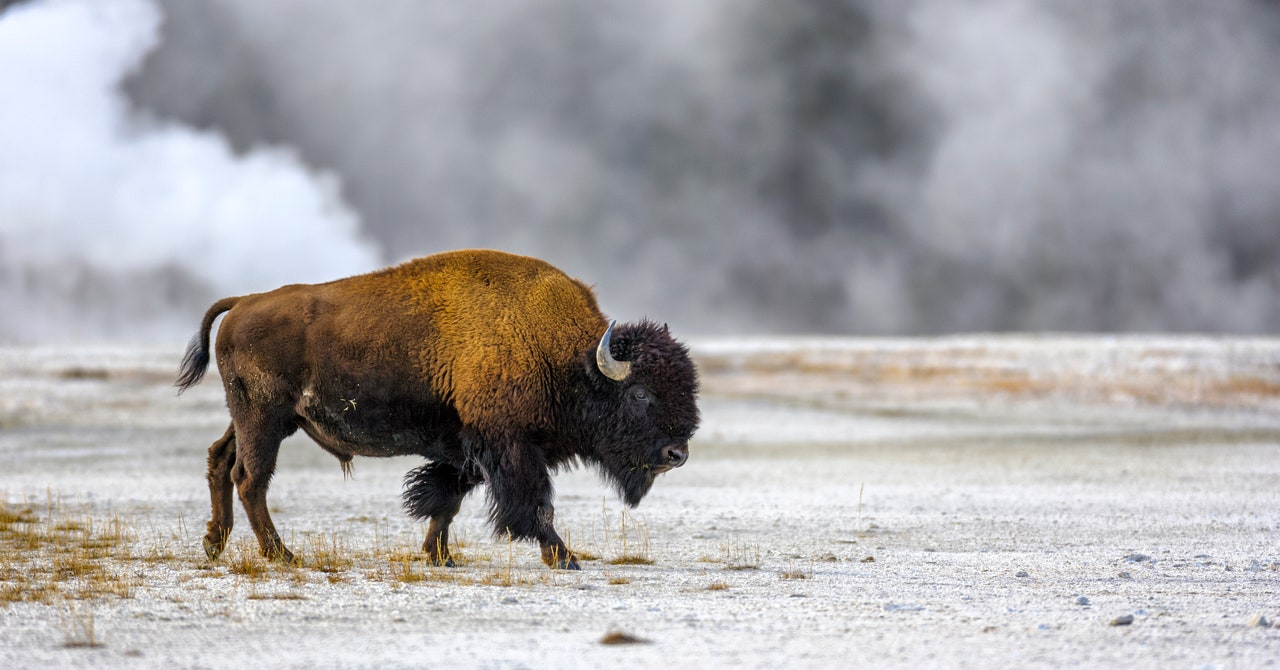
Eisenberg, who has spent her career studying wolves and bison, applies a combination of western science and traditional ecological knowledge, a field of environmental study based on ancient Indigenous knowledge. The field is particularly important for bison restoration efforts, she said, given that the Plains Indians—a term used to describe a number of Indigenous tribes that inhabit the Great Plains of the U.S. and Canada—relied on the animal and its habitat for thousands of years.
“Bison would have historically been moving over that landscape depending on fire, depending on Native Americans, depending on predators, and depending on climate,” said Kyran Kunkel, a conservation biologist and affiliate professor at the University of Montana and a research associate with the Smithsonian Institute. Kunkel also collaborates with the American Prairie Reserve, a nonprofit group that aims to restore bison, remove fences, and piece together fragments of private and public land to restore the native prairie ecosystem.
“They were moving and creating a landscape that had great heterogeneity,” he added. “And so they were impacting grass, and vice versa, and that’s what led to the diverse ecosystems there—birds, small mammals, large mammals and insects,” he said.
“The change we see today has occurred because of what we’ve done to other species directly—not just loss of bison but predator control and management with fencing, growing hay, and manipulating pasture lands,” said Kunkel.
The biggest impact that bison would have on prairie restoration, said Curtis Freese, a former biologist for the World Wildlife Fund and American Prairie Reserve, would be felt after the fences and manmade water sources were pulled out, and bison could interact with fire. Fire is a natural and essential part of the grassland ecosystem. Operating in concert with herbivore grazing, it speeds up decomposition that returns nutrients to the soil. Prior to European settlement, Indigenous tribes would intentionally set fire to the prairie, knowing that, once the grass burned, it would regenerate within several weeks, and then the bison would show up to eat the nutrient-rich grasses.
“Now you’ve got a functioning ecosystem,” said Freese, “where the dominant grazer can graze like they historically did to create the heterogeneous habitat that has been crucial to support the evolution of, in particular, grassland birds.”
Bison are also a valuable source of protein for carnivores in the wild as well as for the tribes, who also want to return bison meat to their diets. Their carcasses support swift fox, golden eagles, grizzly bears, wolves, all the way down to beetles and nematodes. “And then of course it’s like taking a bag of nitrogen fertilizer and dumping it on the ground,” said Freese.
Besides Native American efforts to restore bison, conservation groups throughout the United States have fought for a long time to return bison to parts of their native range. The American Bison Society, Boone and Crockett Club, and the New York Zoological Society have all been researching bison ecology and propagation. One of the most promising efforts is taking shape on historic bison habitat in central Montana, under the direction of the American Prairie Reserve. The nonprofit has a herd of around 810 bison on the land they have acquired thus far, but many cattle ranchers see the effort as a serious threat to their livelihoods and way of life that could further marginalize their businesses.
In Glacier County, home of the Blackfeet Reservation, ranching drives the local economy. Many ranchers—including some Native Americans—view bison as a threat, as competition for scarce resources, such as grass and water, and potential carriers of diseases deadly to cattle. Yet other ranchers are trying to regenerate the land through changing cattle grazing methods, which in some cases includes managing cattle in ways that mimic how bison historically grazed and moved across the land.


